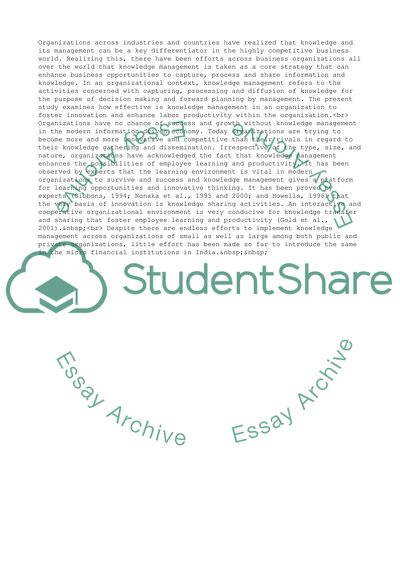Cite this document
(Knowledge Management as the Key to Employee-Learning and Productivity: Research Proposal, n.d.)
Knowledge Management as the Key to Employee-Learning and Productivity: Research Proposal. Retrieved from https://studentshare.org/management/1554841-an-analysis-on-understanding-of-successful-knowledge-management-techniques-implemented-within-microfinancial-institutes-in-india
Knowledge Management as the Key to Employee-Learning and Productivity: Research Proposal. Retrieved from https://studentshare.org/management/1554841-an-analysis-on-understanding-of-successful-knowledge-management-techniques-implemented-within-microfinancial-institutes-in-india
(Knowledge Management As the Key to Employee-Learning and Productivity: Research Proposal)
Knowledge Management As the Key to Employee-Learning and Productivity: Research Proposal. https://studentshare.org/management/1554841-an-analysis-on-understanding-of-successful-knowledge-management-techniques-implemented-within-microfinancial-institutes-in-india.
Knowledge Management As the Key to Employee-Learning and Productivity: Research Proposal. https://studentshare.org/management/1554841-an-analysis-on-understanding-of-successful-knowledge-management-techniques-implemented-within-microfinancial-institutes-in-india.
“Knowledge Management As the Key to Employee-Learning and Productivity: Research Proposal”, n.d. https://studentshare.org/management/1554841-an-analysis-on-understanding-of-successful-knowledge-management-techniques-implemented-within-microfinancial-institutes-in-india.


